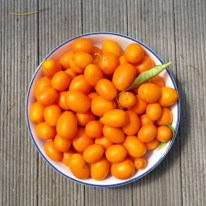 A T-cake, with a difference.
A T-cake, with a difference.
I really amazed myself with this one. Honestly didn’t think it would work.
Combining a recent penchant for all things turmeric and my inveterate tendency to adapt recipes this cake at the outset possibly had a 50/50 chance of success.
Having just made another batch of Jamu (turmeric health tonic), I couldn’t bear to throw out the mulch of turmeric, ginger and lemon. I recalled a recipe JB had given me for ‘turmeric tea cake’ but could not find it, so another adaptation of the ‘Cut & Come Again’ cake has emerged.
I will say upfront that I think almond meal might be better than flour, but that experiment will have to wait for another day.
First up – make the Jamu.
This is a wonderful ‘tea’ that dear friend Annie introduced me to, and which is known in Indonesia as a daily, trusted, health tonic – best drunk first thing in the morning on an empty stomach.
Turmeric has been used for centuries in foods and many believe it has a multitude of health benefits (e.g. anti cancer due to its anti-inflammatory, detox and anti-bacterial properties); some of which have been evidenced in medical research. Curcumin is the active ingredient but by using the whole natural form, you gain from the other properties too. Google it!
I like the idea of drinking this as an anti-inflammatory treatment, instead of taking ibuprofen regularly – I think it works, but possibly in a placebo sense?
Waiver: I have taken to throwing this together (measuring by eye and adjusted to my taste), so these quantities are rough estimates – you will find plenty other recipes that differ from my version, online. It really is delicious; not ghastly as you might expect. Adapt to your own tastes and make it as sweet as you like.
Ingredients
- 1 cup fresh organic turmeric root – roughly chopped
- 2 inches fresh ginger, preferably organic – grated
- half a lemon – the zest and the juice (alt. lime is good too, but stronger flavour)
- 1 tablespoon raw honey
- 2 cups water
Method:
I have done this in two different ways. Both seem to work equally well, but result in a different consistency of ‘tonic’. I’m not sure which is better for retaining the healthy properties. A) By simmering the fresh ingredients first and then mulching them results in a creamy paste. B) By mulching the fresh ingredients first and then simmering, you will have a more liquid concentrate.
Here’s the A version.
- Place all the ingredients in a saucepan and bring to a simmer for about 20 minutes.
- Then use a hand blender or place everything in your blitzer/food processor, until as smooth as you can get it.
- Pour the mixture through a sieve or a cloth bag into a jug or jar, to remove all the fibres. (Don’t throw these away, you need them for the cake!)
- Store in the fridge for up to a week. (This should be just enough for one cup of tea, every day for a week).
- To make your refreshing wake-up tea – simply stir a tablespoon of the ‘tonic’ in a cup of hot water. Add extra honey to taste.
Wee note: turmeric stains everything yellow – just saying.
Turmeric Cake (variations on a theme)
Heat oven to 170 degrees centigrade. Grease and line a regular cake or loaf tin.
Mix together dry ingredients:
- 140g wholemeal flour
- 50g coconut flour
- 50g caster sugar
- 2 tsp baking powder
- a pinch of salt
Mix together the wet ingredients:
- the leftover turmeric, ginger, lemon mulch
- 1 tbsp honey
- 2 eggs
- 1 cup of milk
- 175ml light olive oil or vegetable oil
Combine the wet & the dry ingredients. Pour into the cake or loaf tin. Decorate with raw almonds and bake for 30-35 minutes.
I enjoyed this with natural yoghurt but I’m guessing it would be good with cream or ricotta too with a drizzle of honey.
Note: The cake is delicious eaten warm from the oven; equally the next day, when it will be more moist.
Variations:
- If you substitute the flour for almond meal, use 3 eggs, separated. Mix the yolks with the wet ingredients and then into the dry ones. Whisk the eggs whites until stiff and fold into the mixture.
- Warm lemon and honey together and drizzle over the cake.
Please let me know if you try this and how it worked out for you. Comments very very welcome.


Footnote
In homage to Pamela and Ross: both adored ginger, particularly Ross who felt it was good for the heart and arthuritis. Pamela also enjoyed a bit of turmeric in her scrambled egg, courtesy of Patrick’s insistence, in her last days. Pamela always advocated for organic, fresh ingredients, free range eggs, wild honey and fresh-from-the-cow dairy.
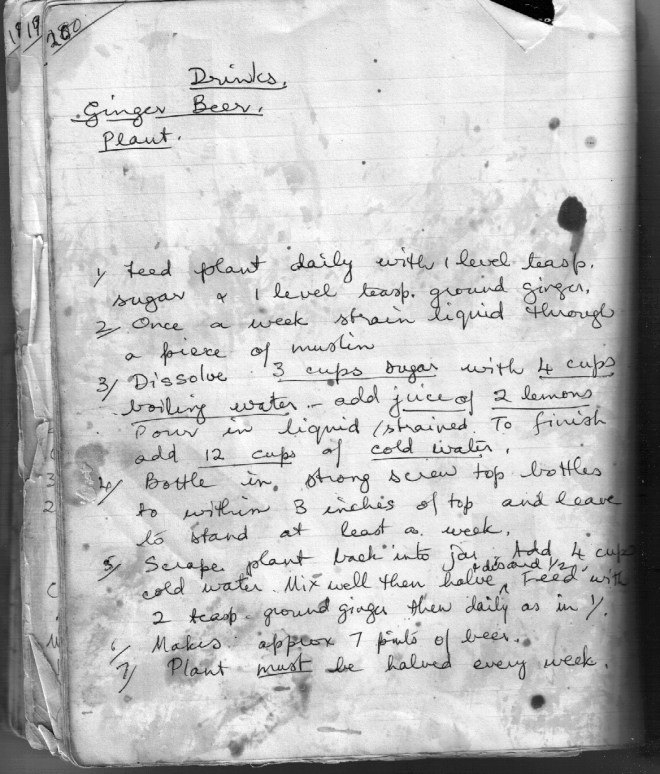


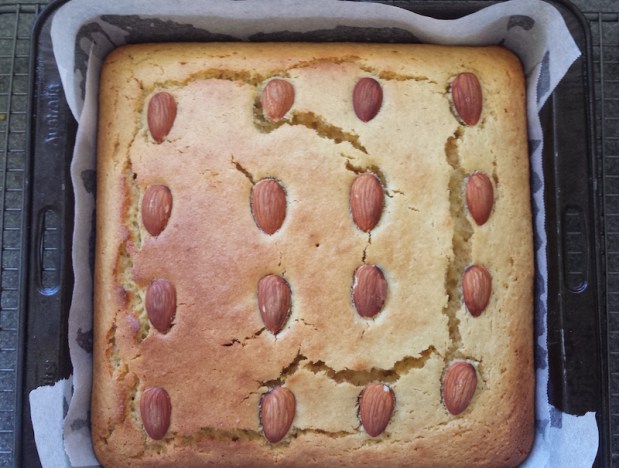
 A T-cake, with a difference.
A T-cake, with a difference.

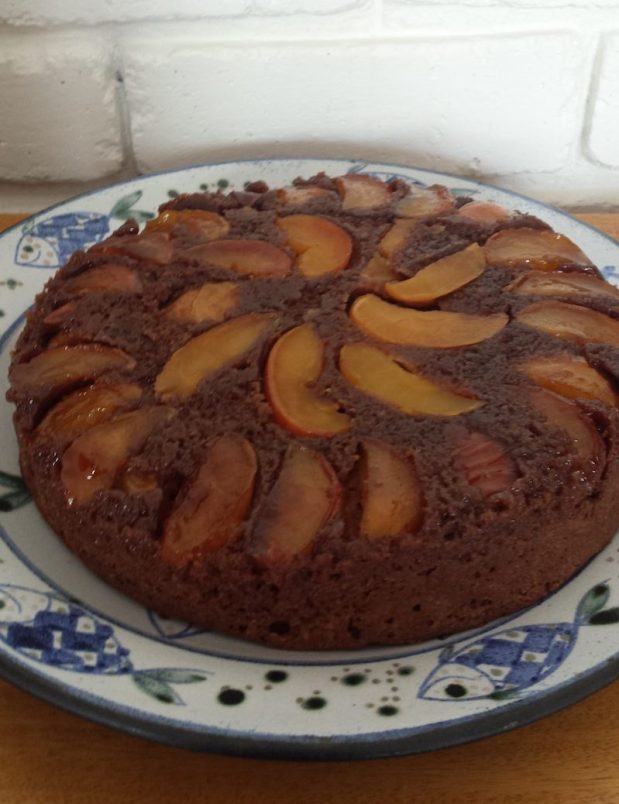



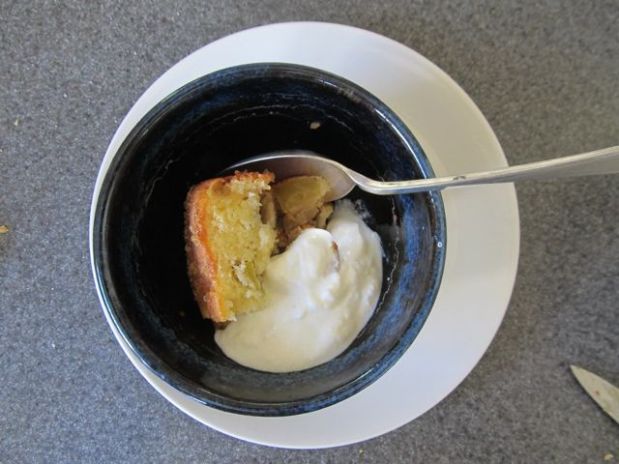







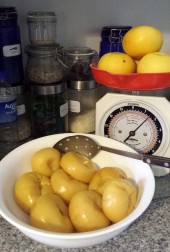 Some people cut up the fruit first and soak it overnight in the water, but it is much easier to cut after it is cooked.
Some people cut up the fruit first and soak it overnight in the water, but it is much easier to cut after it is cooked.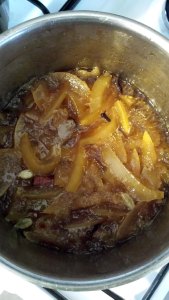 Boil rapidly for 10-15 minutes. Add the 3lbs of sugar and continue to boil rapidly until the sugar is dissolved and the marmalade is at setting point (about 20-25 minutes).
Boil rapidly for 10-15 minutes. Add the 3lbs of sugar and continue to boil rapidly until the sugar is dissolved and the marmalade is at setting point (about 20-25 minutes).
 Wash cumquats. Prick with a fork and place in a Kilner jar or jam them into a clean gin or whisky bottle. Fill almost to top. Add sugar (raw organic) to fill approx one third of the container. Top up with gin. Secure lid. Shake rattle and roll to dissolve the sugar and set aside.
Wash cumquats. Prick with a fork and place in a Kilner jar or jam them into a clean gin or whisky bottle. Fill almost to top. Add sugar (raw organic) to fill approx one third of the container. Top up with gin. Secure lid. Shake rattle and roll to dissolve the sugar and set aside.
